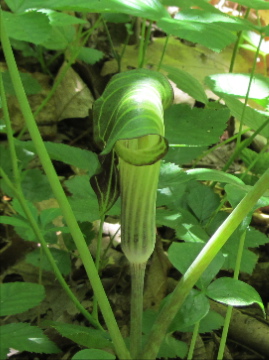This web site highlights the importance of wetlands in both Massachusetts and a trail along
Quinobequin Road in Waban, Massachusetts.
Click here for a map or printable trail guide
Click on any picture below to learn more
|
| |
|
(Wetlands Signpost)
|
|
|
Wetlands are the areas between a source of water, like a river, and the higher ground next to it.
They are places where the soil is saturated with water most of the time. Bogs, marshes, and swamps are examples of wetlands.
Wetlands can be identified by the plants growing here.
Some plants, such as maple and oak trees, can grow in either wetlands or drier uplands.
Others, such as purple loosestrife and cattail, grow only in wetlands, and their presence is a wetland indicator.
|
Why mark this trail?
Read more about wetlands.
|
|

|

|
| |
Click here for some things you may see along the trail.
(There are no signposts for these)
|
|
(Poison ivy Signpost)
Beware! Poison ivy is found throughout this trail.
|

|

|
White pine trees are very tall.
|
(Purple loosestrife Signpost)
Purple loosestrife is an invasive plant taking over the wetlands.
|

|

|
| |
Indian pipe may be found on the right side of the trail in spring and early summer.
|
|
(Maple Signpost)
There are several kinds of maple trees on this trail.
|

|

|
| |
(Blueberry Signpost)
Blueberries ripen in July and August.
|
|
|
Canada Mayflower is found at the base of trees.
|

|

|
(Oak Signpost)
You can see both red and white oak trees on this trail.
|
(Maple-leaf viburnum Signpost)
Don't mistake maple-leaf viburnum for maple trees.
|

|

|
| |
(Touch-me-not Signpost)
Touch-me-not flowers are like little horns.
|
|
|
If you look closely, you can see signs of animals.
|

|

|
(Jack-in-the-pulpit Signpost)
Jack-in-the-pulpit grows low to the ground, in boggy areas.
|
|
There are several bird houses along the trail.
|

|

|
| |
(Floodplain Signpost)
You are standing on a floodplain of the Charles River.
|
|
|
Bittersweet has invaded the trail.
|

|

|
| |
(Burning bush Signpost)
Burning bush leaves turn bright red in the fall.
|
|
|
Turkey tail fungus grows on dead or dying trees.
|

|

|
| |
(Puddingstone Signpost)
Several places along the trail you can see outcroppings of puddingstone.
|
|
(Greenbriar Signpost)
Greenbriar has thorns.
|

|

|
|
(Fern Signpost)
Ferns like to grow in shade.
|

|

|
|
|
Creating the trail
|

|
























